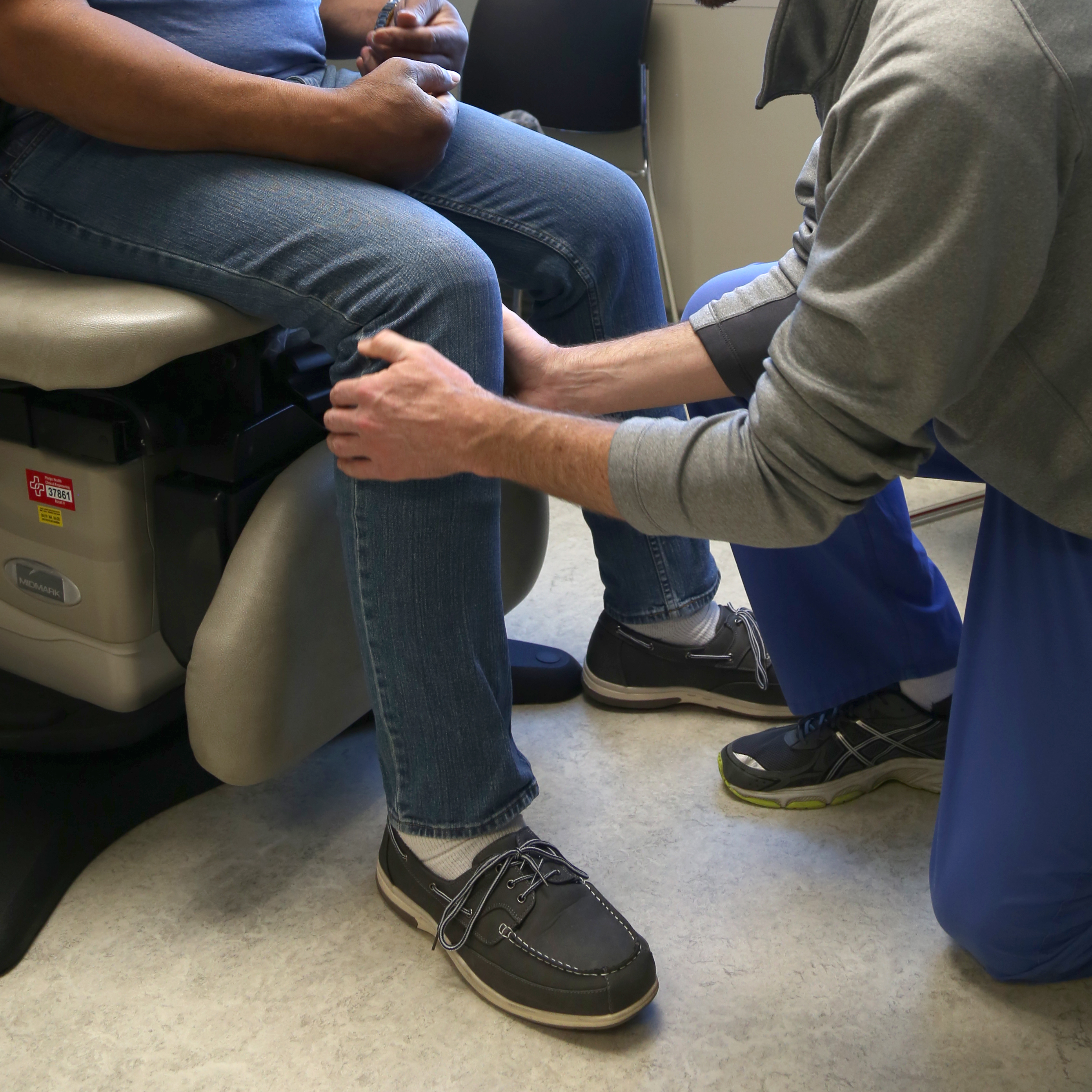
Published on March 10, 2021
Information provided by Sylvester Youlo, MD, an orthopedic surgeon and sports medicine physician at Phelps Health.
If you’ve ever experienced a knee injury, you know different levels of damage can occur. Similar to a vehicle wreck, you may sustain total damage, or you might walk away with a few scratches.
More severe knee injuries, such as a torn ligament, could require surgery to allow your knee to function properly again. Understanding the four major ligaments of the knee that hold bones and cartilage together can help you understand how knee injuries occur and how to avoid them. The following are the four major ligaments of the knee:
- Anterior cruciate ligament (ACL) – This ligament is located in the middle of the knee and helps stabilize the knee joint. ACL injuries occur most often when a person pivots or moves suddenly.
- Posterior cruciate ligament (PCL) – The PCL stretches across the back of the knee and stabilizes the knee joint. A sharp blow to the knee can tear or stretch this ligament.
- Medial collateral ligament (MCL) – The MCL runs along the inside of the knee, stabilizes the knee joint and keeps the knee from moving side to side. This ligament can be torn or stretched when a person receives a blow to the side of the knee.
- Lateral collateral ligament (LCL) – This ligament runs along the outside of the knee, connecting the femur (thighbone) to the fibula (a slim bone that runs down the outside of the calf). LCL tears occur when a person receives a direct blow to the inside of the knee, quickly changes directions or lands awkwardly from a jump.
Knee Pain |
Thursday, March 4, 2021 Listen to Orthopedic Physician Sylvester Youlo, MD, with Phelps Health, talk about knee pain after a knee injury. |
Find an Orthopedic Surgeon
Being mindful of your body movements and avoiding jarring or twisting motions can help you prevent injury. If you do become injured, seek treatment immediately with one of our orthopedic providers at Phelps Health.